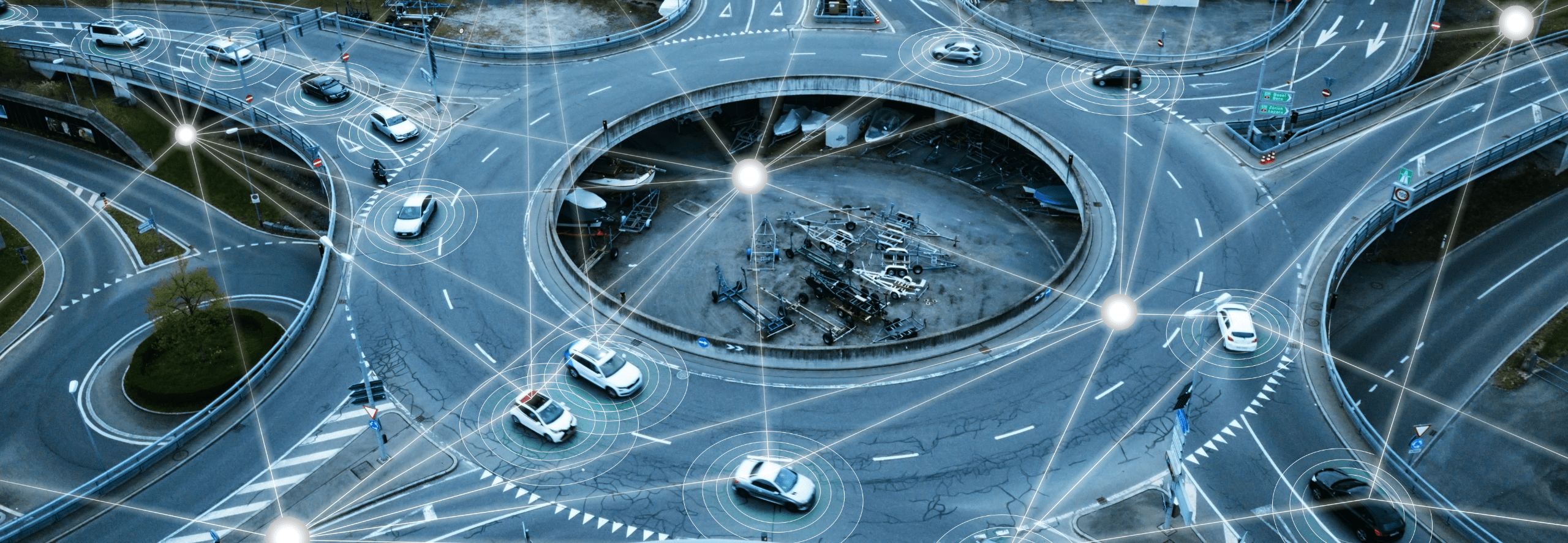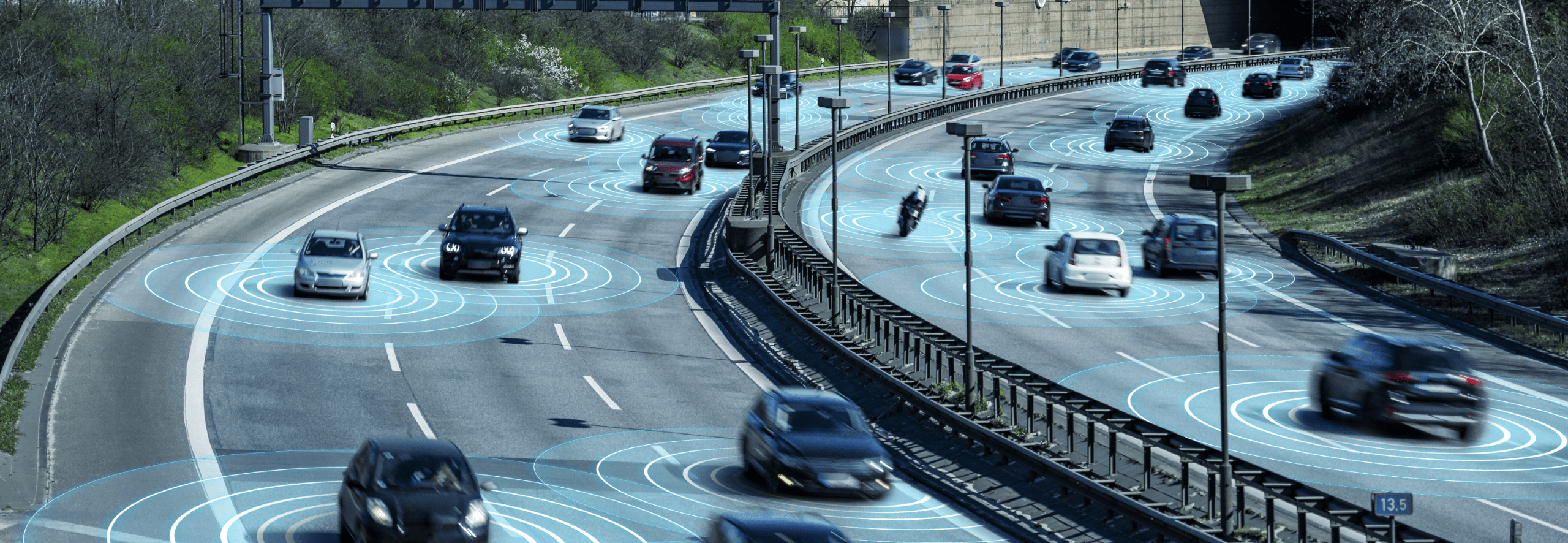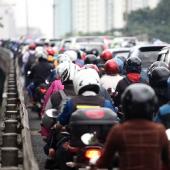Go! Mindblowing mobility driving transportation’s transformation
IN BRIEF
- Mobility-of-the-future opportunities are more numerous, diverse and lucrative than executives outside the expanding industry likely realize.
- The technologies, capabilities and interactions that will drive organizational success in the mobility of the future are highly varied.
- Companies that extract the most value from mobility-of-the-future opportunities will not only win by innovating; they will also out-flex and out-collaborate competitors.
Many of the future of mobility’s shiniest toys—flying cars, robot taxis, electric airplanes—are on the horizon, but not necessarily practical modes of transport just yet. But big investment in other mobility technologies, such as electrification, autonomous vehicles (AVs), mobility-as-a-service (MaaS) platforms and in-vehicle commerce, indicate massive changes to our global transportation system are imminent and will disrupt transportation both inside and outside cities.
“Autonomous connected electric fleets of cars will expand in a zigzag nature as technologies and government regulations evolve unevenly,” notes ZoZo Go CEO Michael Dunne in the foreword to Evangelos Simoudis’s book Transportation Transformation (Corporate Innovators, LLC, 2020). “But by 2030, we should be witnessing changes to our cities that make us stop and say: ‘Wow!’ One thing is certain: The first transformations will occur in cities.”
Mobility’s "wow" moment should entice business leaders from many different industries to recognize the enormous potential for new products and services, and even new markets, that will present themselves as this transformation unfolds.
Current advances seem destined to produce mobility-as-a-service models in which a consumer—let’s go with a suburban resident named Fred—has an autonomous pod fetch him from his home, ferry him to the train (or hyperloop) station and then board an autonomous shuttle to his office. In this scenario, which Simoudis describes in his book, Fred’s subscription-based, app-enabled MaaS platform lets him work, shop and order dinner during his seamless 50-minute commute. Other mobility prognosticators say that’s only the beginning.
“You can even imagine a world where the vehicle is essentially a stand-alone company operating by itself, succeeding based on what it learns through its AI and machine learning, making a living off of its environment by providing mobility services,” Mobility Open Blockchain Initiative (MOBI) Founder and CEO Chris Ballinger told innovation expert and podcaster Grayson Brulte.
Similarly jaw-dropping snapshots of mobility’s future already exist in Singapore, Shanghai, New York, Istanbul, Seoul, Helsinki and other hubs. These developments are space-aged and, at times, chilling, but also surprisingly ordinary in some cases.
Yes, that Tesla Model S giddy-ups to 60 mph in 2.4 seconds and, yes, it still feels liberating to walk away from an Uber ride without the hassle of a traditional payment. But that robot taxi ride in Shenzhen, China? It feels and looks less Jetsons-y and more like you’re riding in the backseat of your brother-in-law’s Pacifica piloted by the Invisible Man. (The intentional familiarity should help adoption, experts say.) What’s less commonplace is awareness of the daunting risks that could hinder mobility’s rapid advance. The U.S.-owned Global Positioning System (GPS), a foundational enabler of many mobility advancements, turns out to be vulnerable to interference, both unintentional and intentional.
How these and other transportation advances, opportunities and risks converge will be determined by less tangible factors, such as public-private collaboration, policymaking, regulatory decision-making, non-stop machine learning, standards-setting and old-fashioned risk management.
"THE FUTURE KEPT ARRIVING. OUR BRIGHT NEW TOYS BEGAN TO RUST BEFORE WE COULD GET THEM HOME, AND LIFE WENT ON MUCH AS BEFORE."
— Ian McEwan, Machines Like Me
THE GLOBAL ELECTRIFICATION OF PUBLIC AND PRIVATE VEHICLES MAY BE THE SAFEST BET TO PLACE WHEN FORECASTING THE FUTURE OF MOBILITY.
Source: Electric Vehicle Outlook 2020, BloombergNEF
Autonomous
Self-driving or self-governing vehicles have been a subject of discussion, research and development for a long time. The question has always been the extent of driver supervision required.
“The shoulder area is very diagnostic of human intention,” venture capitalist James Gowers explained to an IEEE audience during a presentation showing how Perceptive Automata’s “state of mind AI” (SOMAI) model for autonomous vehicles can accurately assess whether urban pedestrians are aware of nearby vehicles and whether walkers nearing crosswalks intend to continue into the street. By consuming an endless diet of “training data” based on the social cues and other subtle signals human drivers reflexively use to make decisions, the algorithms propelling autonomous vehicles safely out of prototype mode and onto more streets are getting smarter every second.
Jim Adler, the head of Toyota AI Ventures told Wall Street Journal columnist Christopher Mimms that “software is eating the world, and cars are next on the menu.”
AV ventures have been devouring eager investment capital as technology companies partner with OEMs and start-up AV companies to produce new AV models and MaaS offerings. Three years ago, research firm IHS Markit projected that more than 33 million autonomous vehicles would be sold globally in 2040, up from 51,000 in 2021. This forecast now seems low, following a string of tech-automotive consolidations and partnerships (e.g., Microsoft and GM/Cruise, Amazon and Zoox, Google and Waymo, Aptiv and Hyundai, Argo AI and Ford/Volkswagen) and Apple’s not-so-secret AV initiative (Project Titan) looming in the wings. Plus, China’s production of autonomous EVs remains on track to surge past current U.S. production levels.
Connected
The U.S.-based International Society of Automotive Engineers (SAE) maintains a six-point scale that rates vehicles based on their degree of automation, from Level 0 (no automation) to Level 6 (full automation). In April 2021, the SAE updated its driving classifications to specify human drivers’ responsibilities while differentiating between the first three levels (grouped as “driver support systems”) and the second three levels (grouped as “automated driving systems”).
“Connected” describes the communication a vehicle conducts with external sources, such as other vehicles, traffic infrastructure, emergency services and other nodes. Sticklers will explain that an autonomous vehicle cannot be a connected vehicle because those interactions negate its ability to operate independently—which explains the term “connected automated vehicle” (CAV).
Vehicle-to-vehicle (V2V) and vehicle-to-everything (V2X) communications promise to provide some of the most dramatic future-of-mobility changes, risks and improvements across numerous areas, including highway/road safety, traffic congestion reduction, pollution control, infrastructure funding and more. The development of global connected-vehicle standards—massive, multi-stakeholder processes driven by organizations like Intelligent Transportation Society for America (ITS America) and its counterparts in Europe, Japan and elsewhere—involves the hashing out of programming codes, definitions and formats required to support interoperable, consistent and seamless communication exchange among shared information systems and devices.
V2X communications will facilitate highly calibrated, more equitable automated micro-tolling systems through which road users will fund maintenance and improvements. V2V communications will continuously transmit road conditions, traffic signal patterns, and speed changes among private and commercial vehicles, generating major reductions in congestion while enabling other movement efficiencies such as truck platooning, in which one or more freight-hauling trucks closely shadow a lead truck to improve route efficiency.
V2X technologies could eliminate or lessen the severity of up to 80% of non-impaired crashes, according to ITS America research, which in turn will reduce emissions given that accidents are the source of more than half of all U.S. traffic congestion.
80%
V2X TECHNOLOGIES COULD ELIMINATE OR LESSEN THE SEVERITY OF UP TO 80% OF NON-IMPAIRED CRASHES.
Embedded
The “X” in V2X communications will include a wide range of commercial vendors selling EV charging, parking services, maintenance, snacks, groceries, entertainment and other offerings. This V-commerce opportunity is huge: Global connected car payments will surpass $650 billion by 2030 when roughly 1.7 billion connected vehicles are on the road, according to PTOLEMUS research. MOBI’s Ballinger said that autonomous transactions will be more impactful than autonomous driving.
An embedded, connected and integrated in-vehicle payment capability is an essential building block of future MaaS offerings: “For the user, MaaS offers added value through a single application to provide access to mobility, with a sole payment channel instead of multiple ticketing and payment operations,” notes a recent ITS Europe paper.
As with other future-of-mobility developments, the size and challenges of the vehicle commerce opportunity hinge on a complex mix of interrelated factors, including the establishment of V2X communications standards, data privacy and security, major questions concerning data ownership, integration among numerous types of technology (e.g., payments, tax determination, e-commerce), regulatory responses and more.
GLOBAL CONNECTED CAR PAYMENTS WILL SURPASS $650 BILLION BY 2030 WHEN ROUGHLY 1.7 BILLION CONNECTED VEHICLES ARE ON THE ROAD, ACCORDING TO PTOLEMUS RESEARCH
Risks and roadblocks
Future-of-mobility opportunities remain fluid thanks to regulatory volatility, known and evolving threats, uncertainty related to emerging mobility standards and shifting human and societal factors. Business leaders evaluating mobility’s current trajectory for opportunities should keep tabs on the following variables:
Regulatory responses
Bans on combustion-engine vehicles mark one of the most common predictions in “future of transportation” articles and are increasingly a theme in national and state-level lawmaking bodies. A raft of other rules concerning different aspects of CAV manufacturing and usage are also on the way. “Getting the technology to make the vehicles is only half the challenge,” notes a report from the National Association of Insurance Commissioners (NAIC) in the United States, which also indicates that more than half of all U.S. states already have enacted AV-related legislation. “The other half will be creating a legal, liability and regulatory framework to govern their use on public streets.” Rules-making will cover strategic national interests, such as control over the battery supply chain, as well as fascinating legal matters. Who’s at fault if the “operator” of a Level 4 AV was reading at the time of an accident? Are DUIs possible in Level 5 AVs?
Agreement on standards
The scope of standards-setting activities surrounding connected and autonomous vehicles is mind-boggling. In recent months and years, vehicle cybersecurity standards along with good and best practices have been undertaken, or called for, by the Singapore Standards Council, Transport Canada, the United Nations Economic Commission for Europe, the National Development and Reform Corporation (NDRC) in China and the U.S. Automotive Information Sharing and Analysis Center (Auto-ISAC). The British Standards Institution Group, the Society of Automotive Engineers, the European Telecommunications Institute and the International Organization for Standardization (ISO) have also weighed in on vehicle cybersecurity. Global standards governing CAV-to-CAV communications—essentially a new language—are also underway. Given that the global transportation sector is the second largest producer of greenhouse gas emissions beyond electricity/heat generation, standards are also needed for carbon measures. In the United States, the NAIC has adjusted insurance coverage frameworks to adapt to ride-hailing activity; now its Innovation and Technology Task Force is examining how to treat bodily injury, property damage, liability coverage and comp and collision for autonomous vehicles.
GPS and V2X threats
Many mobility-venture pitches pivot on the rock-solid notion that if you know a vehicle’s or a passenger’s time and position, you can monetize that data in new ways. But what if time and positioning data is at risk? It turns out that GPS and other nations’ global-navigation satellite systems—Europe’s Galileo, China’s BeiDou and Russia’s GLONASS—are more vulnerable than most lay people realize. Airplane pilots and sea captains have experienced instances of GPS interference for years. In late 2020 through January 2021, pilots within the Wilmington, North Carolina airport experienced GPS-signal interruptions during critical phases of their flights. The culprit took weeks to identify: a wireless control system from a nearby utility company. Other sources of GPS jamming include natural phenomena (solar flares), domestic military exercises, military aggression (Seoul, South Korea regularly experiences outages), privacy jammers, and unintentional interference from public and commercial sources. Global positioning outages can have sweeping effects beyond transportation given that the global financial system relies on these systems to clock the precise time of transactions and that extreme-weather detection systems rely on GPS data. Rival nations would like to see GPS knocked off its perch as the world’s standard global-navigation satellite system. The radio frequency spectrum (75 MHz in the 5.9 GHz band) historically reserved for licensed intelligent transportation systems is also at risk, according to many advocates of vehicle safety and V2X communications. A late 2020 decision by the U.S. Federal Communications Commission (FCC) made a portion of that previously reserved spectrum available to unlicensed, commercial wireless applications. “In light of the increase in fatalities on American roadways last year, the Federal Communications Commission (FCC) made a dangerous decision to give away a majority of the 5.9 GHz spectrum previously reserved for transportation safety,” ITS America President Shailen Bhatt said in response to the FCC’s decision. “Not only has the FCC limited transportation use to 30 MHz of spectrum, it has failed to show that it will ensure that spectrum is usable by protecting it from harmful interference.”
Cybersecurity
As the software enabling autonomous vehicles gets ever more intelligent, concerns about physical safety will decrease, yet the need to focus on passenger’s data security and privacy will intensify. Earlier this year, the European Union Agency for Cybersecurity (ENISA) published a hefty report exhorting the AV ecosystem not to wait: “The automotive industry should embrace a security-by-design approach for the development and deployment of AI functionalities... It is important to promote a culture of cybersecurity (particularly on AI-enabled vehicles) across the automotive ecosystem.” Energy grids also will require stouter cybersecurity as more and more drivers rely on them to charge their EVs. Cyber attacks can become a show stopper if major incidents occur.
Behavioral resistance
For drivers, the transition from combustion-engine vehicles to EVs has been a smooth one, and this should hold as millions more drivers make the shift in the future. Aside from regenerative braking, engine silence and a slightly different start-stop cycle, the differences between piloting a 2021 Ford F-150 and a 2022 F-150 Lightning are minor. Autonomous vehicles will require deeper behavioral change from passengers and from vulnerable road users (e.g., pedestrians, cyclists, scooters, etc.). A nasty accident could cause adoption backlashes as it goes viral on social media. When it comes to micro-mobility vehicles that figure as important nodes in cities’ MaaS plans, a sizeable portion of the population remains unwilling to use electric scooters and bikes. A 2020 online survey of 2,000 South Koreans found that 35% of respondents were “likely” or “very likely” to use personal mobility devices (PMDs); 27% were “unlikely” or “very unlikely” to use PMDs; and 37% were on the fence.
As for changing behavior in the marketplace, consumer migration from awareness to acceptance to commitment to act takes time. Word-of-mouth, convenience, momentum and the experience curve engenders confidence over time. Over a century ago, the market transitioned from the horse and buggy to the automobile once mass production became a reality.
However, humans’ willingness to try new modes of mobility and other behaviors can, of course, change dramatically in short periods of time under the right conditions. This capacity was evident last year as crystal-clear blue skies emerged over the world’s most congested megacities thanks to the pandemic’s temporary impacts on greenhouse-gas emissions. Rapid mobility developments also occurred in old-school global cities: The leaders of London and Paris leveraged the pandemic’s vehicle-traffic reduction effects to quickly install kilometers and kilometers of new bike lanes.
Expect more of these rapid, unexpected developments to occur, says Texas A&M Transportation Institute (TTI) Director Gregory Winfree, who oversaw multi-modal transportation initiatives during his previous tenure in the U.S. Department of Transportation. “We’ve seen more dynamism in the past 10 years than we witnessed in the previous 100 years,” Winfree noted. “And that’s only going to increase over the coming decade.”
"EXPECT MORE OF THESE RAPID, UNEXPECTED DEVELOPMENTS TO OCCUR. WE’VE SEEN MORE DYNAMISM IN THE PAST 10 YEARS THAN WE WITNESSED IN THE PREVIOUS 100 YEARS."
— Gregory Winfree, Texas A&M Transportation Institute
Did you enjoy this content? For more like this, subscribe to the VISION by Protiviti newsletter.






































